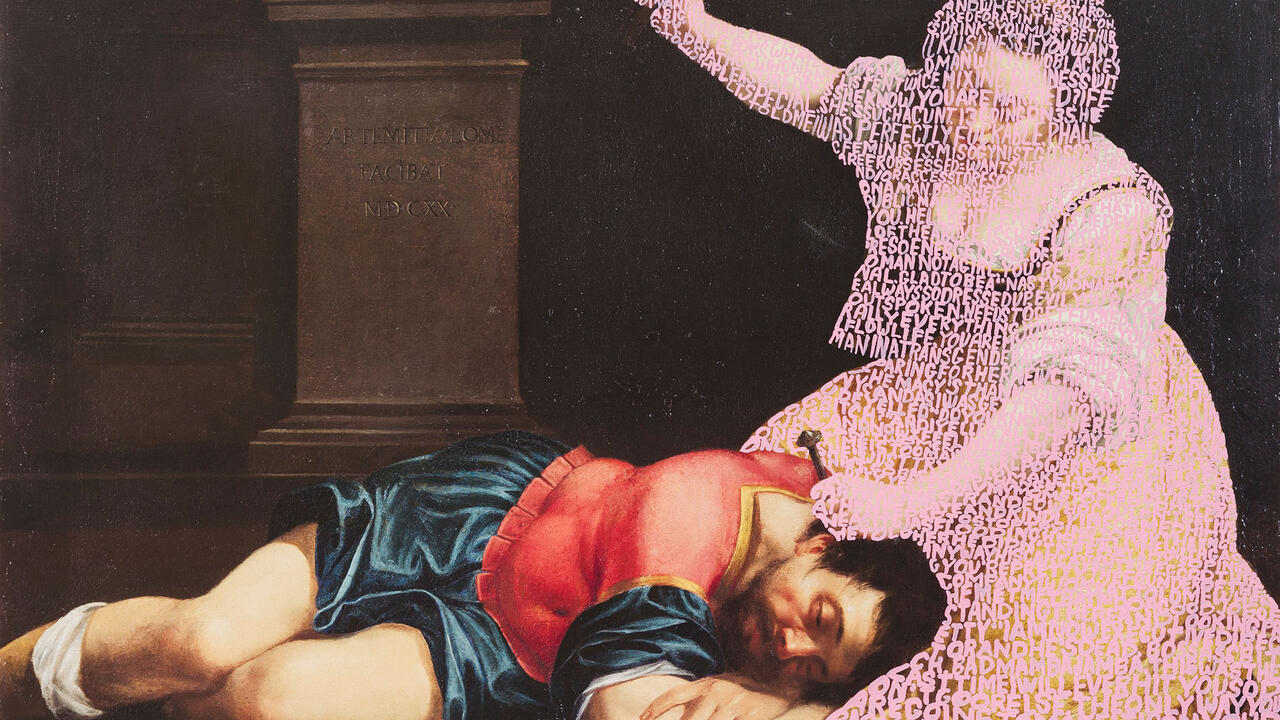Sharon Hayes
Museum of Modern Art, Warsaw, Poland
Museum of Modern Art, Warsaw, Poland

As part of her series ‘In the Near Future’ (2005–ongoing), New York-based artist Sharon Hayes recently staged five actions on the streets of Warsaw. The documentation of her performances, in the form of five slide projections, constituted one of the first shows to be held at the temporary premises of the Museum of Modern Art while the city’s new museum building takes shape. Using the language of street protests and demonstrations of the 1960s and ’80s, the artist appropriates historical slogans and personally reintroduces them to new social and political contexts by taking handwritten signs out onto the streets and holding them up herself. Hayes’ Warsaw project coincided with a seminar organized by the Museum and conducted by Claire Bishop on two watershed years in Poland’s recent history: 1968 and 1989. Participating scholars from Western and former Eastern bloc European countries analyzed how seemingly identical notions and forms of artistic expression can adopt different meanings in different geopolitical contexts. What constituted the avant-garde in Eastern Europe? What sense does institutional critique make in two utterly different systems of artistic life? The Warsaw instalment of Sharon Hayes’ project revealed comparable dilemmas: how does the language of protest, or even identical-sounding slogans, fundamentally differ in meaning in relation to place and local history?
The Polish slogan ‘We condemn US aggression in Vietnam’ was first voiced in 1968 by the country’s communist government, which staged ‘spontaneous’ rallies to air its own propaganda against the ‘American imperialists’. Hayes resurrected this slogan at the entrance to the Warsaw 10th Anniversary Stadium, a building erected in the 1950s which has operated since 1989 as a gigantic bazaar run by Russian and Vietnamese traders. This model socialist structure (soon to be replaced by a new National Stadium) still captures public attention as a relic of the ancien régime. The appearance of an artist on the site attracted the media, and, much to her amazement, Hayes was treated like a film star by journalists, while a few metres up the street Vietnamese sellers went about their usual business, unaware or uncomprehending that the artist’s protest sign referred to their homeland.
In another action, the artist invoked the 1980s’ Solidarity movement among Polish workers and intelligentsia, which has become a landmark in the country’s history. Hayes removed the word ‘Solidarity’ from the movement’s original slogan ‘There was, there is, there will be’, thus opening up the historical message to new meanings. Positioning herself at the entrance to the FSO car production plant and holding aloft a board bearing her handwritten slogan, the artist was regarded somewhat disdainfully by the passing workers, who, amid the current political disengagement in Polish society, seemed to have forgotten the original slogan. Hayes’ determined presence brings to mind the strong female characters in Andrzej Wajda’s ‘Solidarnosc’ films from the late ’70s and early ’80s; she seems to perfectly correspond to the figure of a politically engaged Polish female – an ethos that has endured, in spite of a strong tradition of chauvinism in the Solidarity movement.
It was this chauvinism that reinforced the stereotypical image of women in opposition as being nothing more than tea makers for their ‘fighting’ male colleagues. ‘Women break walls’, a slogan Hayes proffered on a banner at the entrance to one of the main metro stations in Warsaw, referenced a popular protest song of the opposition which predicted that ‘the walls will fall’ (though remained unclear who was supposed to break them down). The artist’s subtle intervention pointed towards the role of women in the country’s political transformation, in the context of a busy street in modern-day Warsaw that has borne witness to a number of feminist demonstrations in recent years.
Hayes appropriates historical slogans, alters their content and plays with the urban context by staging her performances in historical sites or places associated with protest movements, broaching unfamiliar political contexts in the process. Her new slogans transpose their original meanings, posing questions about the significance of the protest itself as well as the function of protest language in contemporary life. ‘In the Near Future’ presents hypothetical utterances at a time when political activism has been brought to a standstill and there seem to be few worldviews worthy of protest. The artist’s actions point to the street as a traditional location of resistance that could once again fulfil its potential.
Translated by Krzysztof Kosciuczuk






















